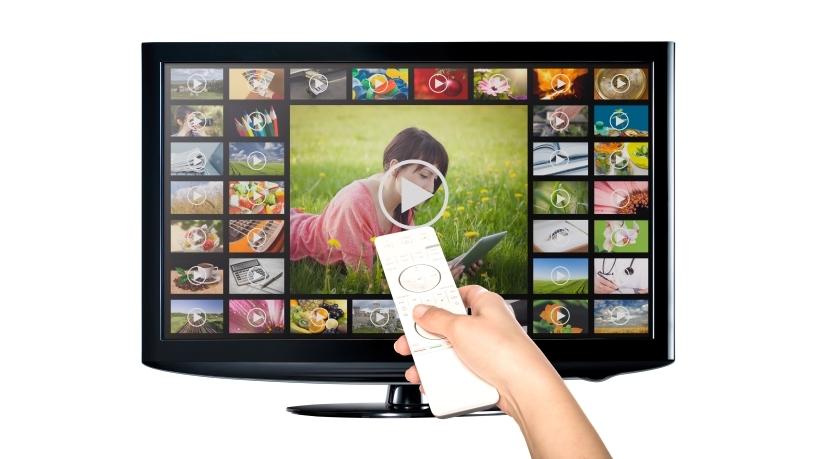
As SA prepares to switch from analogue to digital terrestrial television (DTT), the communications ministry has encouraged households in the missing middle income group to purchase integrated digital TVs.
Missing middle households earn just above the stipulated benchmark for government-subsidised set-top boxes (STBs) but less than R6 500. These households will have to fend for themselves or risk being cut off from the free TV services they have come to depend on.
The South African government has committed to supply 5.2 million free STBs to households that depend on social grants and those with an income of less than R3 200. The STBs are required to convert digital broadcasting signals on analogue TV sets.
While it's been expected that non-qualifying households would also need to purchase decoders for digital migration, the Department of Communications' (DOC's) pronouncements indicate possible changes in the country's route towards digital.
"People who do not qualify for the fully-subsidised STBs (in other words, those who earn above the stipulated threshold of R3 200 per month) have an option of buying a new integrated digital television set with the DTT decoder built-in and migrate with us," says Aldred Dreyer, head of the department's BDM project management office.
"Households that are on pay-television platforms need not worry as they are already on a digital platform."
Warning signs
In the past, pundits and television-focused coalitions cautioned against the use of STBs for SA's switch from analogue to DTT. The STBs were regarded as simply a short-term solution not taking into account the impact of tech evolution on these decoders.
Despite this, set-top box decoders for digital migration have been produced and many are said to be gathering dust at post office warehouses.
After awarding the R4.3 billion contract for set-top box production, the Universal Services and Access Agency of SA (USAASA), which manages the production of the digital migration devices, selected three companies to kick-start production of 1.5 million STBs.
The companies (CZ Electronics, BUA Africa and Leratadima) each received a purchasing order for 500 000 decoders from USAASA. In terms of the order, BUA Africa was contracted to manufacture direct-to-home (DTH) decoders, while Leratadima and CZ Electronics were contracted to manufacture DTT decoders.
In an update report to the Portfolio Committee on Telecommunications and Postal Services on progress of digital migration and STB production, USAASA revealed CZ Electronics delivered the complete order of 500 000 DTT STBs.
Leratadima manufactured 336 026 DTT units. The company is still to manufacture 169 000 decoders as per USAASA's order requirement. On the other hand, BUA Africa has only delivered 23 208 DTH decoders.
The DOC, detailing progress of the digital migration project, indicated the average registration for STBs per day in the Free State province is currently sitting at 600, while an average of 1 000 decoders are installed daily.
The department is looking to complete digital migration in the Free State province by the end of 2018.
According to the department, officials from the BDM project office will visit various districts in the North West and Free State province to register and install government-subsidised decoders to qualifying households in the coming weeks.
Products to market
In the statement, the DOC revealed that last week it met with the local television manufacturing industry on the mass production of integrated digital television sets for the local retail market.
The meeting was also attended by other organs of government including the Department of Trade and Industry, it notes.
Commenting on the meeting, Dreyer says it was the first of many meetings to come as the DOC seeks to ensure products for digital migration become readily available in the retail market.
"What we have been missing in the value chain for migration from analogue to digital has been products for the retail market."
The integrated digital TV sets have a built-in digital tuner, which means it does not need a set-top box to receive a digital signal.
Dean Daffue, go-to-market manager at LG Electronics SA, believes fully digital-ready TVs present huge opportunity for the country to migrate from the current analogue format.
Daffue explains the digital tuner allows a consumer to pick up SABC channels in high-definition (HD) only by connecting a regular bunny aerial to the TV. "If a regular everyday consumer wanted HD channels they would either get their bunny aerial or normal aerial...it is a cost-effective way of giving customers an HD signal without needing a set-top box.
"Previously, you needed to purchase an STB to get IDTV, but now you don't have to purchase that decoder and a TV. You just need to purchase the TV to get that digital signal," he continued.
After failing to meet the 2015 deadline set by the International Telecommunication Union for countries to complete the full switch from analogue to DTT, government is trying to complete the country's digital migration project by June 2019.
Share